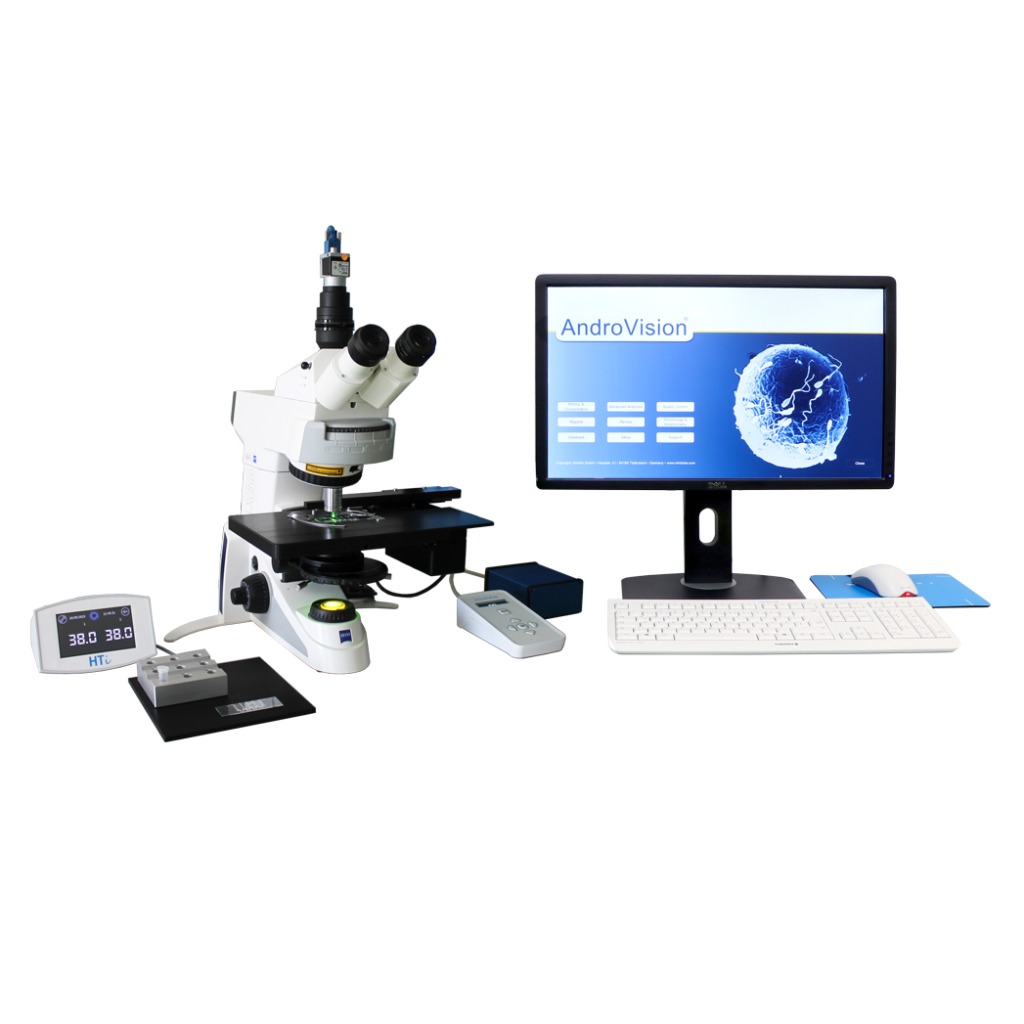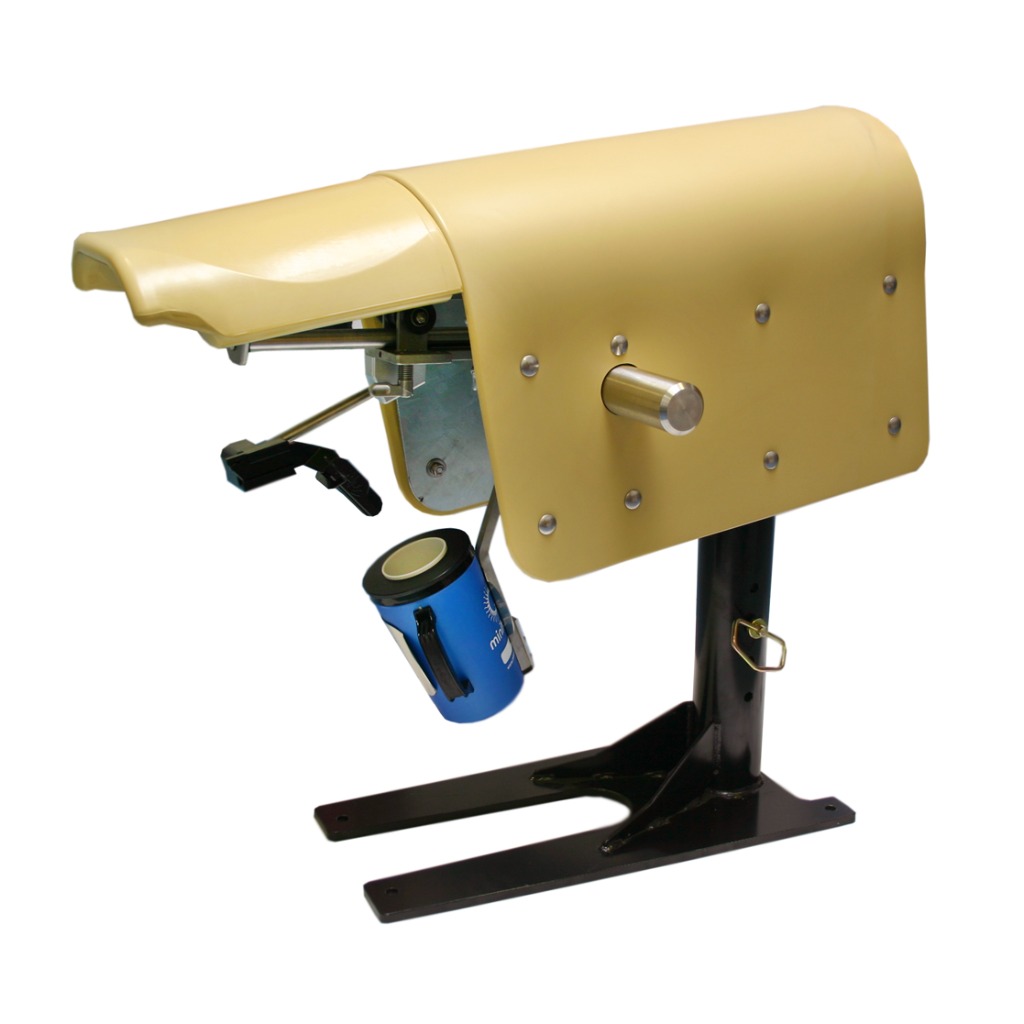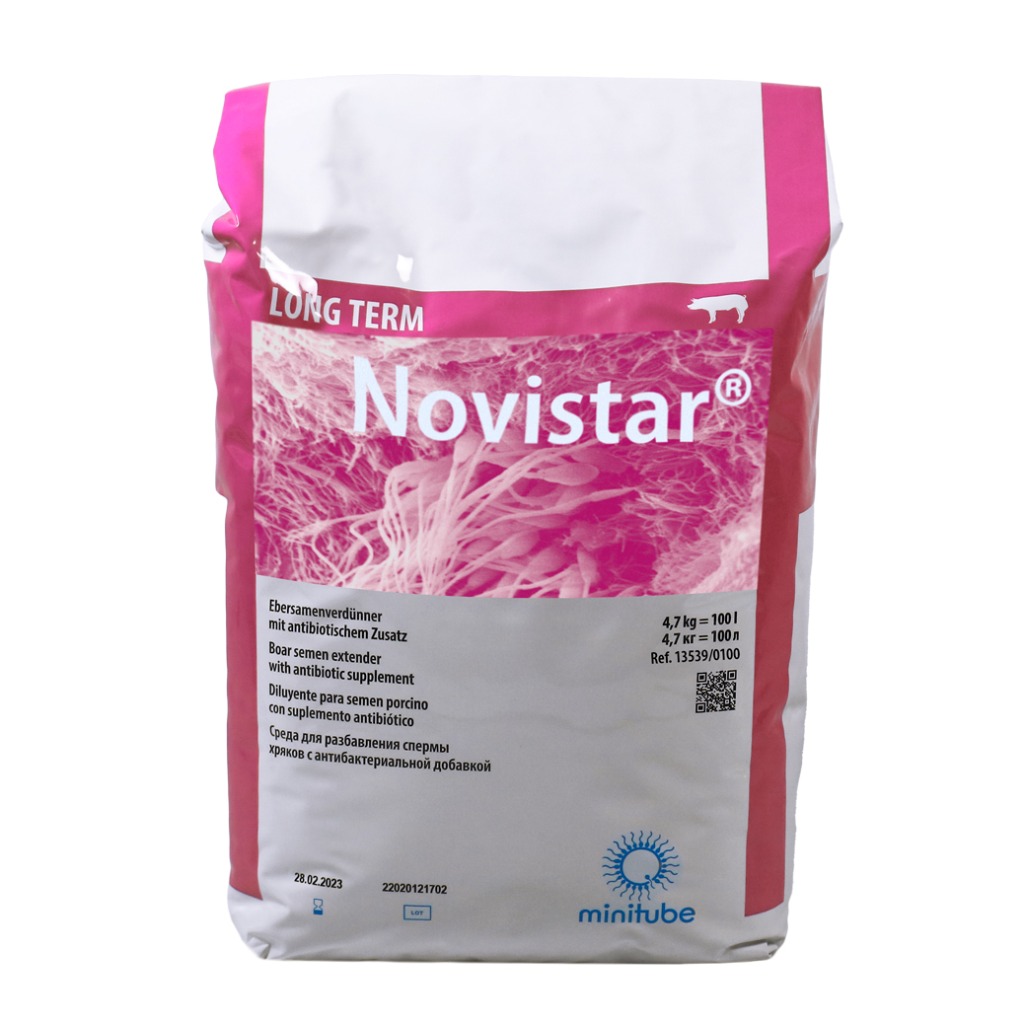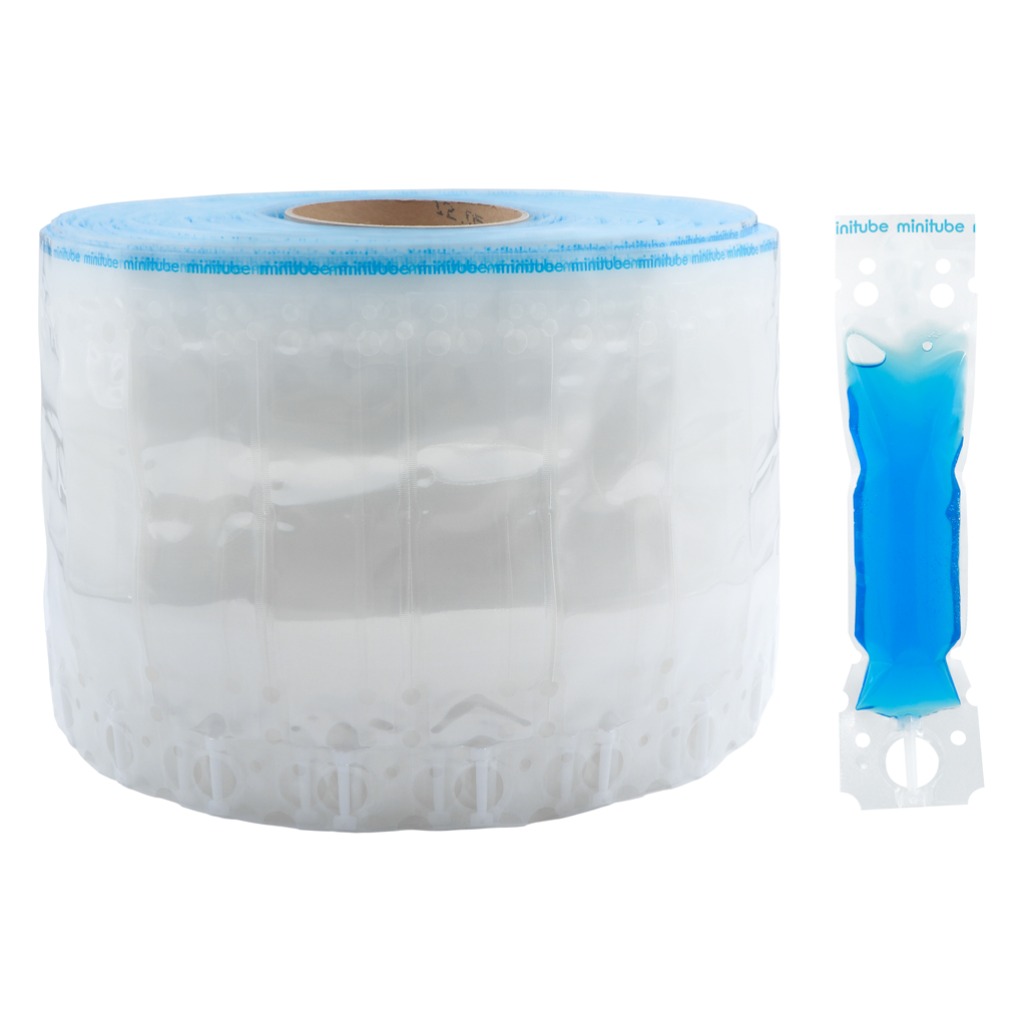Important steps in introducing young boars to semen production
The costs of new boars in an AI stud can be very high depending on their genetic value. Obviously, there is a vital interest in maximizing the use of these boars for semen production. After or even during the quarantine period, the first steps in bringing a young animal into production include training the animal for semen collection and evaluating the quality of the semen. The optimal age at which a young boar is first trained varies from breed to breed, but the general rule is that training should not begin before 7 months of age.
Collection training
The most important part of boar training begins the first day when the young boar enters his new environment. His caretakers must communicate confidence. The development of a young boar's confidence is critical to his future behavior and collection performance. Handling young boars is a task that requires experienced and dedicated staff. Stress is highly detrimental to the training process and caretakers must be able to always exercise patience with the animals.
The best boar trainers are patient and enjoy working with the animals. They also know and understand the basic reproductive behavior of the animal. They also have contact with the boar before training begins to allow the boar to get to know them and build trust. Each boar should have a dedicated trainer who spends a few minutes a day with the young animal. Scratching, rubbing, and talking with the animal will help build trust.
IMPORTANT: Young boars entering the stud require not only very much patience from the operator, but also the design of the training area and the training protocol are also crucial for the collection performance. The environment in which the boars are kept, combined with the quality of the staff responsible for their care and training, are important factors that can positively or negatively affect the boars‘ libido.
Training should begin during the quiet hours in the barn, and this is also the ideal time to introduce the boar to the collection pen for the first time. A suitable training area is clean, dry, well lit and free of distractions. The boar should be given sufficient time to adapt to his new environment. The dummy in the collection pen should be the same type that will be used later for semen collection. A dummy that has been used for collection by an older boar just prior to training will get the young boar's attention more quickly. The scent will stimulate the boar. If it is possible for the young boar to see another boar's collection just before he enters the collection pen, i.e. from a preparation box, it will stimulate him considerably.
The height and width of the dummy must allow for a comfortable mounting. The height should be set at the same height or slightly lower height than the boar being trained. Young animals up to about 15 months of age require narrower dummies (25-30 cm) than older boars. The dummy should be sturdy and fixed to the floor. The floor of the collection pen should be non-slip. A rubber mat in front of the dummy can help.
Each training session should be relatively short, not exceeding 10-15 minutes. During this time, try to focus the boar's attention on the dummy, as he will be stimulated by seeing the shape of the dummy. This can be done by standing or crouching next to the dummy and getting the boar's attention by touching and talking to him (i.e. petting him or calmly slapping on the dummy). Semen from a previous collection, saliva from another boar or synthetic hormones can also be used to impregnate the dummy prior to training.
Some boars will try to mount the dummy immediately; others may need several training sessions. The animal should learn from the beginning, that the collection pen means “work” only. It needs to learn that when it enters the pen, it must be collected and then goes back. Keeping the training sessions short will significantly reduce the boar's reaction time, which is critical to the productivity of a boar stud. Reaction time is the time when the boar enters the pen to when he is collected. If the young boar has not mounted the dummy after 10 minutes, take him back to his pen and try another session on the next day. This may need to be repeated on several subsequent days.
Once the boar has mounted the dummy, approach him slowly and begin to stimulate his prepuce. Slowly try to clean the prepuce. This will stimulate him, and it is also necessary to empty any preputial fluid. Grab the penis when it starts to protrude and begin the collection.
At this point, most of the work of training a boar is done. When the collection is complete, show the boar that he has done well. Pet or scratch him and take him back to his pen. Give him some food as a reward. Continue the collection for the next 2-3 days to reinforce the boar's positive experience. After that, take a break for 3-4 days and then start collecting him on a weekly basis only.
If the above recommendations are followed, 90% of the young boars should be able to be collected within 2-4 weeks of training, provided training is started before 10 months of age. If the training is started after the age of 10 months, the success rate is usually reduced to only 70% of the boars. After successful training, the boar can start to produce semen doses. The first usable dose depends on the semen quality of the ejaculates. As the first 2-3 ejaculates are usually of insufficient quality, semen quality testing should be started after this.
IMPORTANT: Too young animals, lack of confidence in the operator, traumatic experiences of the animal and incorrect technique can lead to total failure in the training of young boars.
Semen quality control
After the first semen collections, the young animal is usually introduced to the stud to begin with semen production, provided the quarantine requirements are met. This may well happen before the boar is 8 months old. At this time, he is not yet fully sexually mature, which affects his libido and especially his semen quality. His libido depends on his genetic background, but it can be boosted by applying the boar training techniques mentioned above. Semen quality depends not only on his genetic background but also on his age.
The minimum semen quality requirements for a young boar should fulfill the following parameters (BRS, 2023):
- 100 ml semen volume without bulbo-urethral gland secretion
- 150 million sperm/ml
- 15 billion total sperm in the ejaculate
- 70% total motility
- Maximum 25% abnormal sperm in total
- < 5% head abnormalities
- < 10% acrosome abnormalities
- < 15% plasma droplets*
- < 15% coiled tails
- < 15% other abnormalities
*In sperm doses with at least 2 billion sperm and at least 75 % motile sperm up to 72 h of preservation, this value can be exceeded by up to 10 percentage points. The percentage of morphologically abnormal sperm increases accordingly to a maximum of 35 %.
Schulze et al. (Institute for Reproduction of Farm Animals in Schönow, Germany) investigated factors influencing semen parameters of young boars. In this study, semen from 7213 ejaculates from 5057 young boars was evaluated. The young boars were genetically verified and trained but were not used for semen production prior to the study. Of the semen doses from these boars, 47.3% did not meet BRS requirements. Boar age had a significant influence, with most boars under 8 months of age showing poor semen quality. More than 60% of the ejaculates from this age group did not meet the requirements. This was mainly due to deficiencies in qualitative parameters such as morphology and motility.
In addition to age, breed also influenced semen quality in young animals between 4.5 and 16.8 months of age. In this study, young Duroc boars had lower semen motility and more morphological abnormalities, whereas young Yorkshire boars had the highest semen volume and the fewest morphological abnormalities. Pietrain and Landrace boars had the best semen motility. A seasonal influence was also evaluated and shown to have only a marginal effect.
The study concludes that young boars under 8 months of age are more likely to fail the minimum semen quality requirements and should not be used in production until they are older.
Another study (Tsakmakidis et al.) also states that the sperm chromatin instability is higher in the semen from young boars (8-10 months). In this study, AI with semen from young boars resulted in a lower farrowing rate compared to semen from older, more mature boars (> 10 months of age).
Conclusion
The introduction of a young boar to the stud is a critical stage in his production life. During collection training, anything that increases the boar's confidence and comfort is important and will result in a shorter reaction time and more efficient semen collection, thus maximizing the boar's and ultimately the stud's performance.
The semen quality of very young boars is likely to fall below the minimum requirements up to 8 months of age. This should be taken into consideration when starting semen production with young animals.
References:
Schulze M, Buder S, Rüdiger K, Beyerbach M, Waberski D (2014): Influences on semen traits used for selection of young AI boars. Anim Reprod Sci. 2014 Aug;148(3-4):164-70. doi: 10.1016/j.anireprosci.2014.06.008. Epub 2014 Jun 24.
Tsakmakidis IA, Khalifa TA, Boscos CM (2012): Age-related changes in quality and fertility of porcine semen.
Biol Res. 2012;45(4):381-6. doi: 10.4067/S0716-97602012000400009.
Contact:
Contact us using the following form.







